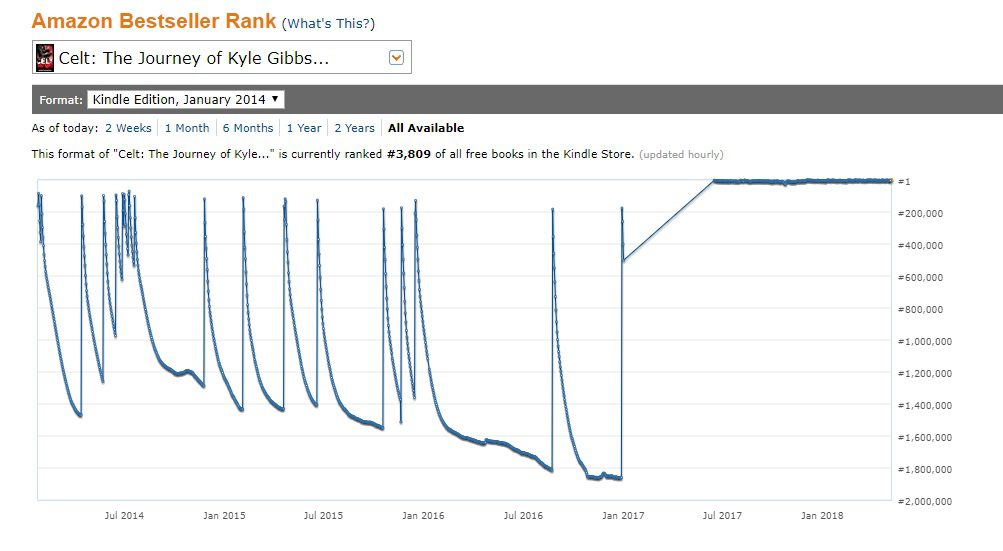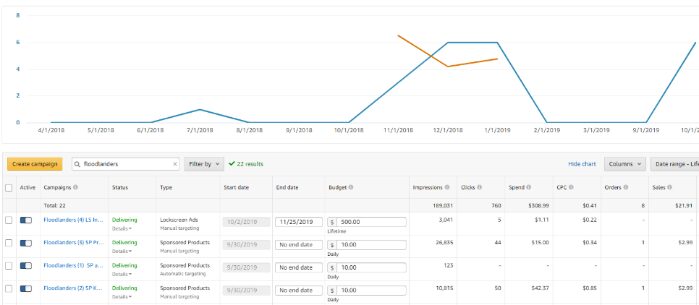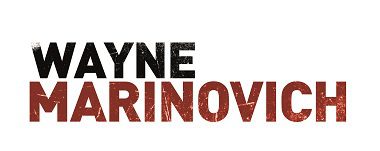Post-publication

Topics
- Change book front and back matter
- Update keywords online
- Change price points
- Adverts and promos
“If you want to be a writer, you must do two things above all others: read a lot and write a lot” – Stephen King
Change book front and back matter
If you only intend to produce that one bucket-list novel and aren’t going to write anymore, then the front and back matter shouldn’t need to change unless you change your website or mailing list host. However, if this is your career, then this prime real estate will need constant revision. Both front and back matter are wonderful tools to engage with your reader but do beware of too much overselling. Keeping these updated is a never-ending process, especially if you’re a self-published author.
Front Matter
My front matter consists of things like the title, my name, publisher and copyright details. I also include web links to all my suppliers — my editor, proofreader, cover designer and book formatter. These folk are all part of the team who’ve helped to produce my books, so early acknowledgement is only fair.
I have a short story giveaway in the first novel of my Kyle Gibbs series. This links to a mailing list which they sign up for to get the short story. I call the list my Front Matter List because I find that these readers tend to be more interested in freebies than other content and news, and will unsubscribe pretty soon after that.
Back Matter
I have the same short story giveaway for a second time in the back matter, but this links to a list that I call the Back Matter List. If people subscribe via this list, I can assume that they like, or are at least interested in my writing. I’m happy to pitch new releases and back catalogue deals to them (as well as other freebies) because chances are they will spend money on my work.
Other backmatter pages include personal acknowledgements to any other people I want to list. There is an author bio section, and any author notes that I feel might apply to the book or topics that were covered. Then I have a separate page for my back catalogue of published works that can direct customers, with a single click, to my book pages on my website. As you write more, you must update this area with new books, or if you have a long series, add a single link to the series page on your website.
Update keywords online
All search engines use keywords as a method of pairing readers with your books so they can buy them. The critical task here is to keep analysing which keywords work, and this takes time.
When you upload your books to your author profiles on the online bookstores, you will be allowed seven to ten keywords. Amazon is the largest online bookstore, so focus initially on this one. With Amazon, you also get to select two categories to assign your book to, and these are typically genre-based. Check what categories are available in each book store because they do differ occasionally.
Please don’t use your category in your keywords because that will just duplicate and waste them. Come up with fresh ones. If you use Amazon, have a look at the KDP Rocket software. There is an initial, once-off payment, but it allows you to analyse much of the metadata that Amazon uses. I use this extensively when setting up a new book or doing advertising through Amazon (AMS).
It has the following apps within Rocket:
- Keywords search
- Competition analyser
- Category search
- AMS keyword search
Note: Every six months, I relook at the keywords I’ve allocated to my books and boxsets, and change them up a little. You want them as unique as possible, but they need to be words that readers will search for. That is hard and takes effort and experimentation, but it matters.
I have a spreadsheet listing all my books and have various tabs for the keywords I’ve used, and are currently using. This allows me to track those that have worked. It’s a lot of work, but that’s what publishing is all about.
Change price points matter
How you price the books you sell is a personal decision for you as an author. No two authors will have the same opinion on what the best price point is. Again, this comes to going a lot of reading and research.
If you have a standalone book, then it’s critical that you look at the genre you’ve written in. Look at both the eBook and printed books to give you a clear idea of where to price your work.
If you have a series, you may look at the classic sales funnel first. Look at how the other authors in your genre have priced each book. If they are all the same, it probably means that a large publishing house is setting the price of the books. If it has a free first book, then escalating prices for each one after that probably occur.
I offer my first book for free, the second is priced at $0.99, and then after that are $4.99.
I do this because I have played around with the different prices and find that for an eBook, these are what people will happily pay. If you are a newbie author, be prepared to start lower until you have a few books or a serious number of reviews.
Adverts and promos
The initial sales spike you get when you launch your book will sadly not last very long. Even the momentum from all your posts, tweets and likes won’t keep the good times rolling. Eventually, the algorithms pick up your dip in sales, and your rankings will begin to slide. Whether you’re traditionally or self-published, you’re going to have to promote your book again, and again, and again. Here are a few ways you can revive flagging sales.

Launch another book:
Nothing promotes your work more than writing another book. Whether it’s a sequel in a series or another standalone, people will see your latest release, and buy your other book if they like the way you write.
Booklists:
One of my favourite sources of promotion, and best value for money for getting new readers. Essentially, they are extensive mailing lists for readers. You will have to discount your book or offer it for free to get a slot on many of their daily mailing schedules. A few of the lists will have entry criteria, like a minimum of five or ten reviews (four- and five-star ratings only) before they will accept your submissions. Here is a list of a few of the better ones to try. The reason I love them is that they have mailing lists split by genre so you can target true lovers of your work. There is a one-off cost once your book has been selected for the mailshot of between $25 and $100 per listing (most are US-based lists).
Amazon AMS:
Amazon Marketing Services to give it the full name. You can set up as many different campaigns as you want for your book. Read Mastering Amazon Ads: An Author’s Guide by Brian D Meeks for a detailed guide on how to set up and track your campaigns. He’s a statistics nerd so you won’t have to go to the lengths he does, but it will help you get to grips with each type of campaign available. Some target your genre, some target keywords that readers search for, while others target authors who are similar to your book (you select the authors).
Cost is per click on the ad depending on the value. Be aware that it can be expensive, but you only get charged for an actual click. Amazon doesn’t look to use up all your budget because it’s driven by clicks, not the need to make money from your advert.

AMS update:
Amazon often changes its algorithms and marketing tools, and Brian’s book may be getting a little out of date. I’d buy the eBook all the same because his methods and discipline are a good read. When you create your ad campaigns, Amazon suggests bid values for your keywords and categories. I’ve noticed those prices steadily going up over the past two years, so it’s getting more challenging to get budget clicks through to your book.
Facebook ads:
Facebook will use up your budget in the timeframe, no matter what, because that’s how it makes its money. It doesn’t care as much as Amazon about getting a good product in front of the right audience. I ran a few short ad campaigns to test the audience in the Facebook world. My parameters were 18- to 40-year-old males in the UK (and the US), yet, most of the likes I got were from Bangladesh and far eastern Europe plus my budget was used up with not a single sale.
I hear some do get success from a Facebook ad and as soon as I find them, I’ll get a link to their articles about it. You may get more followers, which is okay as that may lead sales further down the line, but then why not just create a blogpost and “boost” the post in FB for less money.
BookBub Ads:
I’ve only just started using them, and, to be honest, they seem to be the best at the moment. Most of my books are on Amazon, so I tie these promos in with a booklist campaign. Don’t run them at the same time as any Amazon ads though. You don’t want to be charged twice for the same click. David Gaughran has a fantastic book about how to set up your BookBub ads — BookBub Ads Expert: A Marketing Guide to Author Discovery.
Note: Because Amazon likes it when you have a sustained upward sales curve (this means they promote it even more) I tend to have a specific way I co-ordinate all my promotions and adverts.
If it’s a free book on Amazon, you can do this at any time, but remember that you are doing this for exposure to your author brand and not sales. If you are promoting a book that is on Amazon Select for sales and revenue, use all your five free days together. Don’t waste your time splitting them up into smaller batches because you will lose the benefits of Amazon’s algorithms.
I schedule all the smaller booklists early in the five-day campaign, leaving the better ones like BookBub, Freebooksy, Robin Read, Book Gorilla, etc., until last. This means the sales pick up over the campaign and it fools the Amazon algos into thinking this is a genuine sales run. It will then promote you onto other bestsellers lists if it believes it’s on a sustainable upwards sales run.
Further Reading
Re-read the fifth page in the Publishing Tip series – Part 5 – Publish, Hitting the Button
Please click on the button below if you want to receive my newsletter with tips, book release updates and FREE sign-up gifts










